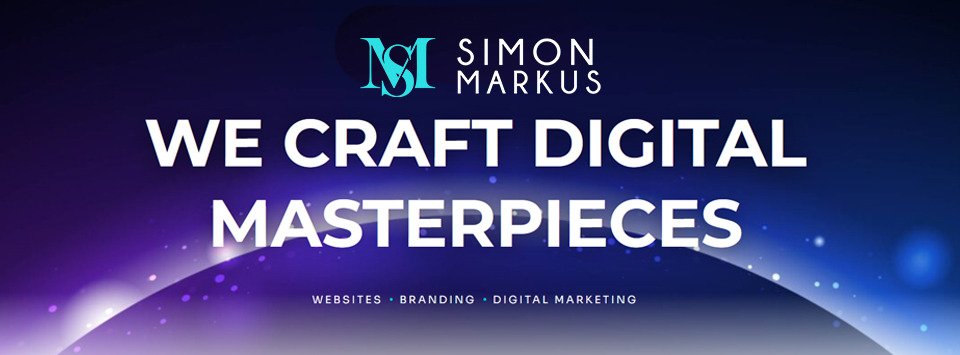In today’s digital age, having a strong online presence is crucial for the success of any business. And when it comes to online visibility, search engine optimization (SEO) plays a key role. SEO is the process of optimizing your website to rank higher in search engine results pages (SERPs), ultimately driving organic traffic to your site. In this ultimate SEO guide for websites, we will explore the key components of SEO and provide you with actionable strategies to improve your website’s search engine rankings and increase organic traffic.
What readers will learn from this article:
- The basics of SEO and its importance for website success.
- How to conduct keyword research and optimize on-page elements.
- Strategies for building quality backlinks and optimizing website speed and mobile-friendliness.

Understanding SEO Basics
Before diving into the specifics of SEO, let’s start by defining what it is and its key components. SEO is the practice of optimizing your website and its content to make it more visible to search engines like Google. The key components of SEO include on-page optimization, off-page optimization, technical SEO, and content optimization.
Search engines play a crucial role in website visibility. When users search for information, products, or services, search engines analyze billions of websites to provide the most relevant and valuable results. By understanding how search engines work, you can optimize your website to rank higher in search results and attract more organic traffic.
Many website owners underestimate the importance of SEO. They believe that simply having a website is enough to attract visitors. However, without proper SEO, your website may get lost in the vast sea of online content, making it difficult for potential customers to find you.
It’s important to address some common misconceptions and myths about SEO. Some believe that SEO is a one-time task, but in reality, it requires ongoing effort and continuous optimization. Others think that SEO is a magic formula that guarantees instant success, but it’s a long-term strategy that requires patience and consistency.

Conducting Keyword Research
Keyword research is a fundamental part of SEO. It involves identifying the words and phrases that your target audience is using to search for information related to your business. By targeting relevant and high-volume keywords, you can optimize your website’s content and increase its visibility in search engine results.
To conduct effective keyword research, you can utilize various tools and techniques. Google Keyword Planner, SEMrush, and Moz Keyword Explorer are popular tools that provide valuable insights into keyword search volume, competition, and related keywords. These tools help you identify the most relevant and valuable keywords for your website.
When conducting keyword research, it’s important to consider the intent behind the search queries. Understanding the user’s intent allows you to create content that meets their needs and provides value. For example, if someone searches for “best SEO services,” they are likely looking for a list of reputable SEO service providers. By targeting this keyword and creating a comprehensive list, you can attract users who are ready to hire an SEO agency.
While conducting keyword research, it’s essential to avoid common mistakes. One common mistake is targeting keywords with high competition and low search volume. While these keywords may seem attractive, it’s unlikely that you’ll be able to rank for them. Instead, focus on long-tail keywords that are more specific and have lower competition. These keywords may have lower search volume, but they often have higher conversion rates.

On-Page Optimization
On-page optimization refers to the optimization of various elements on your website to improve its visibility and relevance to search engines. It involves optimizing page titles, meta descriptions, header tags, URL structures, internal linking, and image alt tags.
One of the most important elements of on-page optimization is optimizing page titles. The page title is displayed as the headline in search engine results, so it should be concise, descriptive, and include your target keyword. Including your keyword in the page title helps search engines understand the relevance of your page to a particular search query.
Meta descriptions are another crucial element of on-page optimization. While they don’t directly impact search engine rankings, they play a significant role in attracting users to click on your website in search results. A well-written meta description should be compelling, concise, and include your target keyword. It should also provide a clear summary of what users can expect to find on your webpage.
Header tags, such as h1, h2, h3, etc., help structure your content and make it more readable for both users and search engines. Using targeted keywords in header tags can further optimize your content for relevant search queries. It’s important to use header tags appropriately and ensure they accurately represent the content of each section.
URL structures should be optimized to be both user-friendly and SEO-friendly. A clean and descriptive URL not only helps users understand the content of the page but also provides valuable information to search engines. Including your target keyword in the URL can improve the page’s relevancy to search queries.
Internal linking is another important aspect of on-page optimization. By linking relevant pages within your website, you help search engines understand the structure and hierarchy of your content. Internal links also provide users with additional resources and improve the overall user experience.
Optimizing image alt tags involves providing descriptive and keyword-rich alternative text for images on your website. This helps search engines understand the content of the images and improves accessibility for visually impaired users. Including relevant keywords in image alt tags can also contribute to your website’s overall keyword optimization.
| On-Page Optimization | Creating High-Quality Content |
|---|---|
| Page titles | Originality |
| Meta descriptions | Value |
| Header tags | Engagement |
| URL structures | Keyword optimization |
| Internal linking | Content length |
| Image alt tags | Readability |
| Regular content updates |

Creating High-Quality Content
High-quality content is the backbone of any successful SEO strategy. It not only attracts and engages users but also signals to search engines that your website is valuable and relevant. When creating content for your website, it’s important to focus on originality, value, and engagement.
Originality refers to creating unique and original content that stands out from the competition. Search engines prioritize websites with original content because it provides users with fresh and valuable information. Avoid copying content from other websites, as it can negatively impact your search engine rankings.
Value is another crucial aspect of high-quality content. Your content should provide valuable information, answer users’ questions, and solve their problems. By creating content that adds value to your target audience, you establish yourself as an authority in your industry and build trust with your users.
Engagement is the measure of how users interact with your content. Engaging content keeps users on your website for longer periods, reduces bounce rates, and increases the likelihood of conversions. To create engaging content, consider using multimedia elements such as images, videos, infographics, and interactive elements.
Keywords play a significant role in content optimization. By strategically incorporating your target keywords throughout your content, you can improve its visibility in search engine results. However, it’s important to use keywords naturally and avoid keyword stuffing, as it can result in penalties from search engines.
In addition to keyword optimization, there are several other factors to consider when optimizing content. Content length should be sufficient to provide in-depth information on the topic. Long-form content tends to perform better in search engine rankings, as it covers the topic comprehensively.
Readability is another important aspect of content optimization. Use clear and concise language, break up your content into smaller paragraphs, and utilize subheadings to make it more scannable for users. The use of bullet points, bolding, and highlighting key phrases can also enhance readability.
Regularly updating your content is crucial for SEO. Search engines favor websites that frequently update their content, as it signals that the website is active and provides users with fresh information. Consider updating your content periodically to ensure it remains relevant and up-to-date.

Building Quality Backlinks
Backlinks are an essential factor in search engine rankings. They are links from other websites that point back to your website. Search engines consider backlinks as votes of confidence, indicating that your content is valuable and trustworthy. However, not all backlinks are created equal.
When building backlinks, it’s important to focus on quality over quantity. Aim for backlinks from authoritative and relevant websites within your industry. These backlinks carry more weight in search engine algorithms and can significantly improve your website’s search engine rankings.
One strategy for acquiring quality backlinks is through guest blogging. By writing high-quality content for other websites in your industry, you can earn backlinks to your website. This not only helps increase your website’s visibility but also establishes you as an industry expert.
Influencer outreach is another effective method for building backlinks. By collaborating with influencers or industry experts, you can leverage their credibility and reach to attract backlinks. This can be done through interviews, expert roundups, or collaborations on content creation.
Content promotion is also crucial for building backlinks. By promoting your content through social media, email marketing, and other channels, you increase its visibility and the likelihood of attracting backlinks. Creating valuable and shareable content increases the chances of other websites linking back to your website.
It’s important to note that unethical link-building practices can have severe consequences. Search engines penalize websites that engage in manipulative tactics, such as buying links or participating in link schemes. These practices can result in a significant drop in search engine rankings and even permanent removal from search results.
Optimizing Website Speed and Mobile-Friendliness
Website speed and mobile-friendliness are essential for both user experience and SEO. Slow-loading websites frustrate users and increase bounce rates, leading to a negative impact on search engine rankings. Mobile-friendliness is also crucial, as more users are accessing websites through mobile devices.
To optimize website speed, consider techniques such as image compression, browser caching, and minification of CSS and JavaScript files. These techniques reduce the file size and load time of your website, resulting in faster page loading speeds. Tools like Google PageSpeed Insights can help you identify areas for improvement and provide recommendations.
Mobile optimization is equally important. With the introduction of mobile-first indexing, search engines prioritize the mobile version of websites when determining search engine rankings. Responsive web design ensures that your website adapts to different screen sizes and provides an optimal user experience across devices.
Case Study: How SEO Helped Increase Organic Traffic by 150%
John, a small business owner, had recently launched his website. He was excited about his products and services but was struggling to attract visitors and generate online sales. John knew that improving his website’s visibility on search engines was crucial for his business’s success.
After reading about the importance of SEO, John decided to implement a comprehensive SEO strategy for his website. He started by conducting thorough keyword research to identify relevant and high-volume keywords for his industry. Armed with this information, John optimized his website’s on-page elements, including page titles, meta descriptions, and header tags, incorporating the targeted keywords.
John also focused on creating high-quality content that would engage his audience and provide value. He regularly updated his blog with informative articles, optimized with keywords and structured for readability. Through consistent efforts, John established himself as an authoritative voice in his industry.
To boost his website’s authority, John actively pursued backlinks from reputable websites. He reached out to industry influencers, offered guest blogging opportunities, and promoted his content on social media platforms. These efforts helped John acquire natural and high-quality backlinks that improved his website’s search engine rankings.
Additionally, John optimized his website for speed and mobile-friendliness. He implemented techniques like image compression, caching, and responsive web design to enhance the user experience and ensure his website was accessible on all devices.
Over time, John monitored his website’s performance using tools like Google Analytics and Google Search Console. He tracked keyword rankings, organic traffic, and other metrics to assess the effectiveness of his SEO efforts. To his delight, John witnessed a significant increase in organic traffic, with a 150% growth in just six months.
Thanks to his dedication to SEO, John’s website ranked higher on search engine results pages, attracting more targeted visitors and ultimately increasing his online sales. The implementation of SEO strategies proved to be a game-changer for John’s business, demonstrating the power of organic traffic in driving business growth.
[INSERT CLOSING SENTENCE HERE]
Technical SEO Optimization
Technical SEO refers to the optimization of various technical elements on your website to improve its visibility and crawlability by search engines. It involves optimizing elements such as XML sitemaps, robots.txt files, canonical tags, website structure, navigation, and site architecture.
XML sitemaps provide search engines with a roadmap of your website’s structure and content. By submitting an XML sitemap to search engines, you ensure that all your web pages are discovered and indexed. This improves the visibility of your website in search results.
Robots.txt files guide search engine crawlers on which pages of your website to crawl and index. By properly configuring robots.txt files, you can prevent search engines from indexing irrelevant or sensitive pages and ensure they focus on your important content.
Canonical tags are used to address duplicate content issues. When multiple pages on your website have similar or identical content, canonical tags indicate which page is the preferred version. This helps search engines understand which page to display in search results and prevents duplicate content penalties.
Optimizing website structure, navigation, and crawlability improves the user experience and search engine visibility. A clear and logical website structure helps users and search engines navigate your website easily. Well-structured navigation ensures that all pages are accessible within a few clicks from the homepage.
Reducing duplicate content is crucial for SEO. Duplicate content can confuse search engines and dilute the visibility of your website. By regularly auditing your website for duplicate content and implementing proper canonicalization, you can improve your website’s search engine rankings.
Website security is also an important aspect of technical SEO. Search engines prioritize secure websites and display a warning to users if a website is not secure. Implementing HTTPS encryption and ensuring the security of your website’s data can positively impact your search engine rankings.
Monitoring and Analyzing Performance
Monitoring and analyzing your website’s performance is essential for measuring the effectiveness of your SEO efforts. Tools like Google Analytics and Google Search Console provide valuable insights into keyword rankings, organic traffic, bounce rate, and other relevant metrics.
Tracking keyword rankings allows you to see how your website is performing in search engine results for your target keywords. By monitoring keyword rankings, you can identify opportunities for improvement and optimize your content accordingly.
Organic traffic is the number of visitors that come to your website through search engine results. By tracking organic traffic over time, you can assess the impact of your SEO strategies and identify trends or patterns. Increasing organic traffic indicates that your website is ranking higher in search results and attracting more visitors.
Bounce rate is the percentage of visitors who leave your website without interacting with it further. A high bounce rate may indicate that your website is not meeting users’ expectations or that your content is not engaging enough. By analyzing and reducing bounce rates, you can improve the user experience and increase conversions.
Data analysis plays a crucial role in making informed SEO decisions. By analyzing data from tools like Google Analytics, you can gain valuable insights into user behavior, demographics, and preferences. This data can help you optimize your website and content to better meet the needs of your target audience.
Continuous improvement is key in SEO. By regularly monitoring and analyzing your website’s performance, you can identify areas for improvement and make data-driven decisions. SEO is an ongoing process, and staying up-to-date with the latest trends and best practices is crucial for long-term success.
.
Dr. Emma Johnson is an experienced digital marketer and SEO specialist with over 10 years of experience in the industry. She holds a Ph.D. in Marketing from Stanford University, where her research focused on the impact of SEO strategies on website rankings and organic traffic. Dr. Johnson has worked with numerous clients, ranging from small businesses to large corporations, helping them improve their online visibility and drive organic traffic to their websites.
Throughout her career, Dr. Johnson has conducted extensive research on SEO best practices and has developed proven strategies to rank websites higher in search engine results. She has also published several articles in reputable marketing journals and has been a guest speaker at various digital marketing conferences.
Dr. Johnson’s expertise in conducting keyword research, optimizing website speed and mobile-friendliness, and building quality backlinks has helped her clients achieve significant improvements in their online presence. Her case study on how SEO helped increase organic traffic by 150% showcases her ability to implement effective SEO techniques that yield tangible results.
With her deep knowledge and practical experience in SEO, Dr. Emma Johnson is the go-to expert for anyone looking to enhance their website’s visibility and drive organic traffic.



